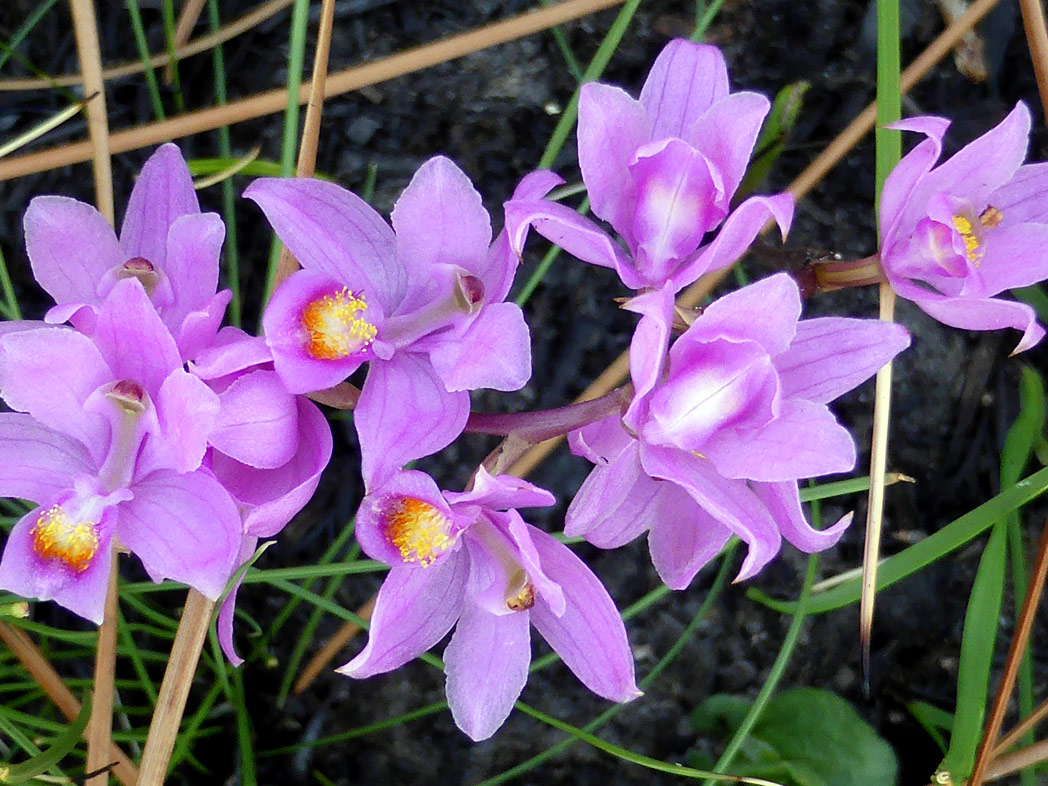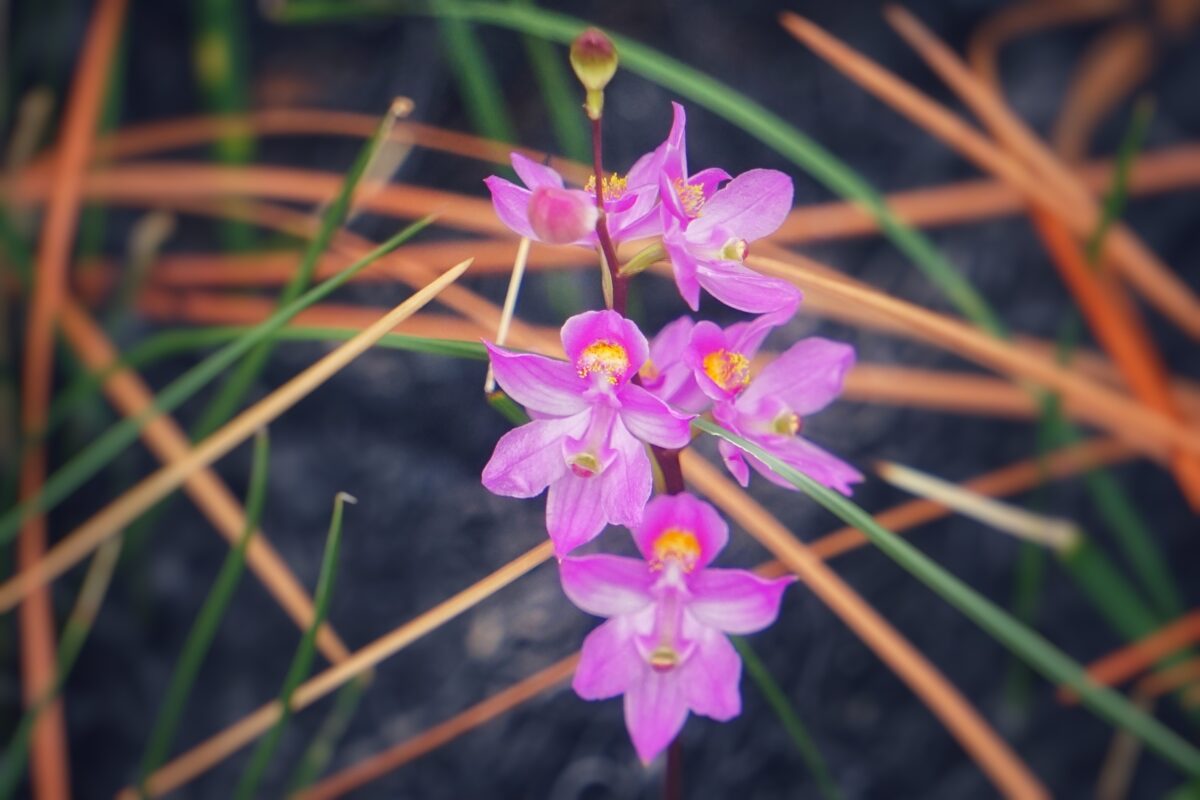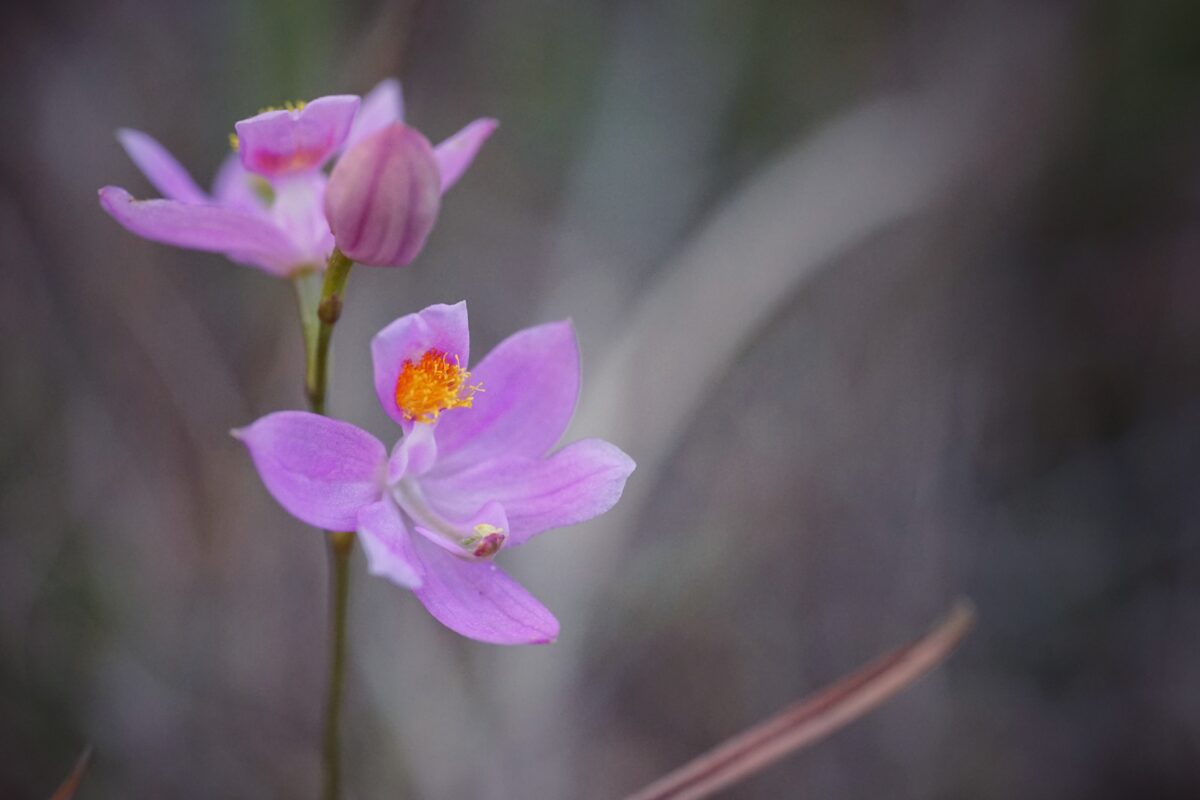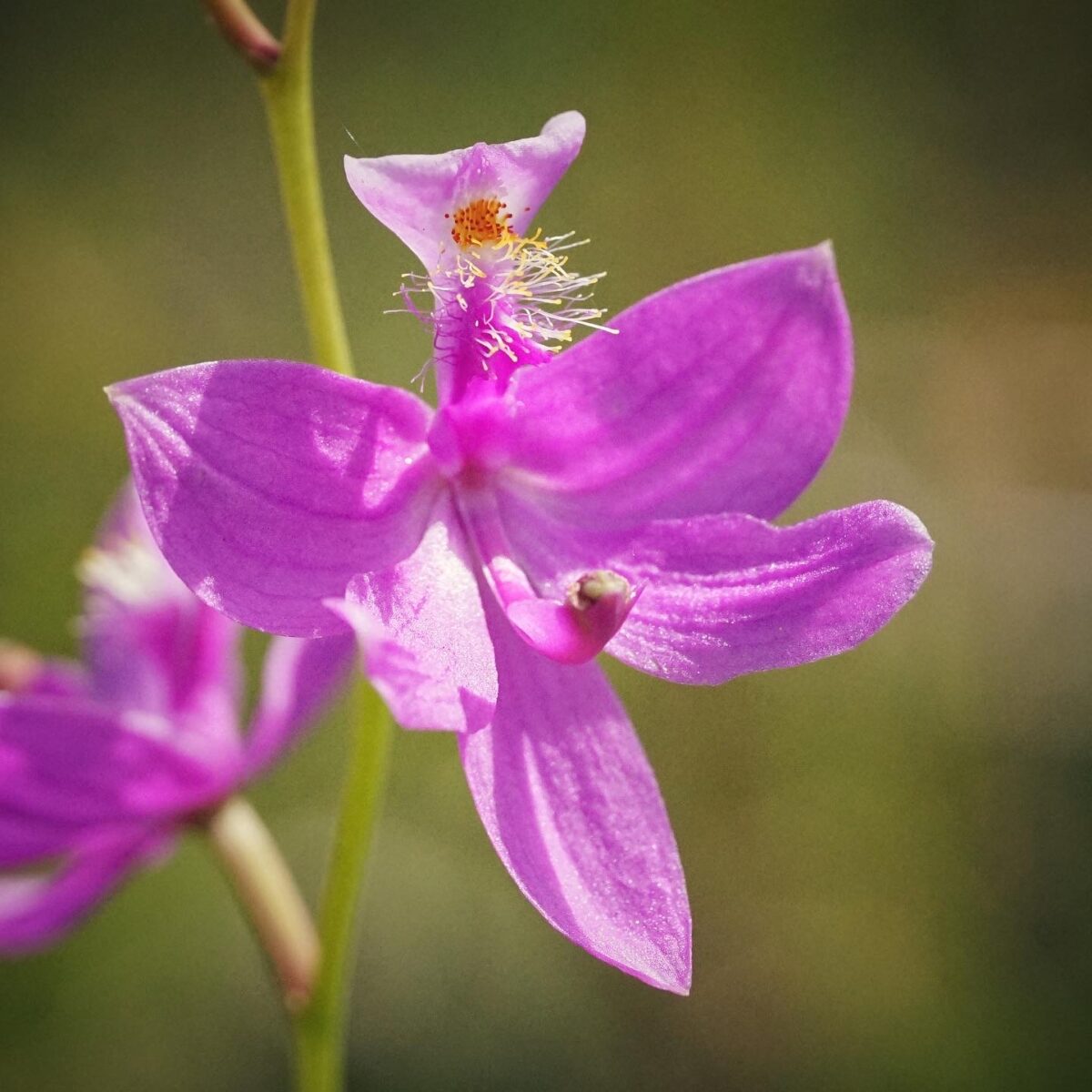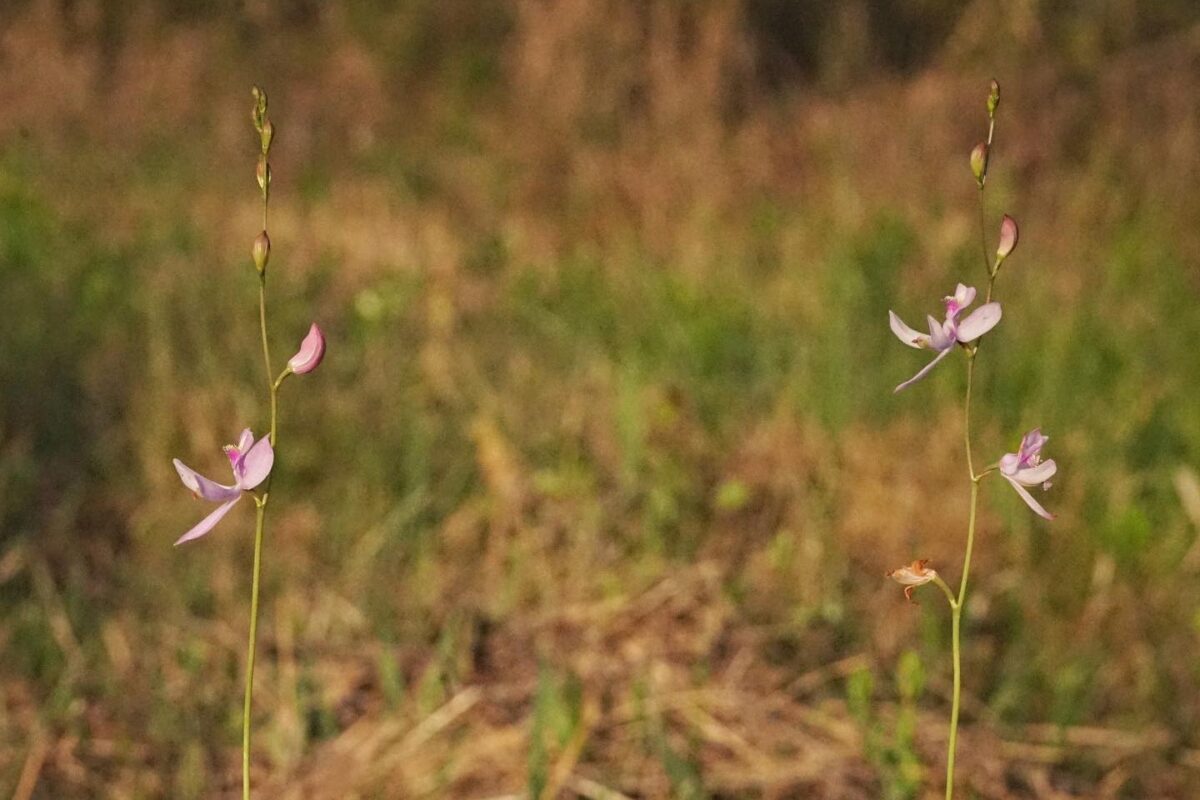Manyflowered grasspink
Pictured above: Manyflowered grasspink (Calopogon multiflorus) by Eleanor Dietrich. Click on terms for botanical definitions. View post as a PDF.
Manyflowered grasspink is a state-threatened terrestrial orchid that blooms winter through spring, but most abundantly in March through May. It occurs naturally in dry to wet pine flatwoods and dry prairies. The plant is fire-dependent; blooming typically occurs within several weeks of a burn.
Manyflowered grasspink flowers are borne in numbers of 5 to 15 in a terminal inflorescence. They are very fragrant. Petals are dark pink to magenta. They are widest in the middle of the bloom. A labellum (liplike petal) occurs on the top of the flower (not the bottom where it occurs in most genera) and bears a tuft of yellow stamen-like bristles. Leaves are basal, grasslike and often absent once flowering begins. Stems are leafless, slender and up to 12 inches tall. Seeds are borne in capsules.
The pollination process of the Calopogon genus is unique. The stamen-like bristles that form on the lip are designed to attract pollinators, but they offer no nectar or pollen. Instead, when a bee lands on the hairs, the lip swings down and loosely traps the bee, forcing it to crawl out across the reproductive parts. Pollen is then deposited on the bee; if the bee is already carrying pollen, it will make contact with the flower’s stigma and (hopefully) pollinate the flower.
The genus name Calopogon is from the Greek kalos, or “beautiful,” and pogon, or “beard.” It refers to the tuft of hairlike structures on the flower’s lip.
Family: Orchidaceae (Orchid family)
Native range: Franklin, Leon, Liberty and Wakulla counties, as well as much of the peninsula
To see where natural populations of Manyflowered grasspink have been vouchered, visit florida.plantatlas.usf.edu.
Lifespan: Perennial
Soil: Acidic, sandy to loamy soils
Exposure: Full sun to minimal shade
Growth habit: up to 1’ tall
Manyflowered grasspink is not commercially available. It is best observed in its natural environment.
Learn more about Manyflowered grasspink from the Institute for Regional Conservation.
For more information on other Calopogon species, see these resources:

